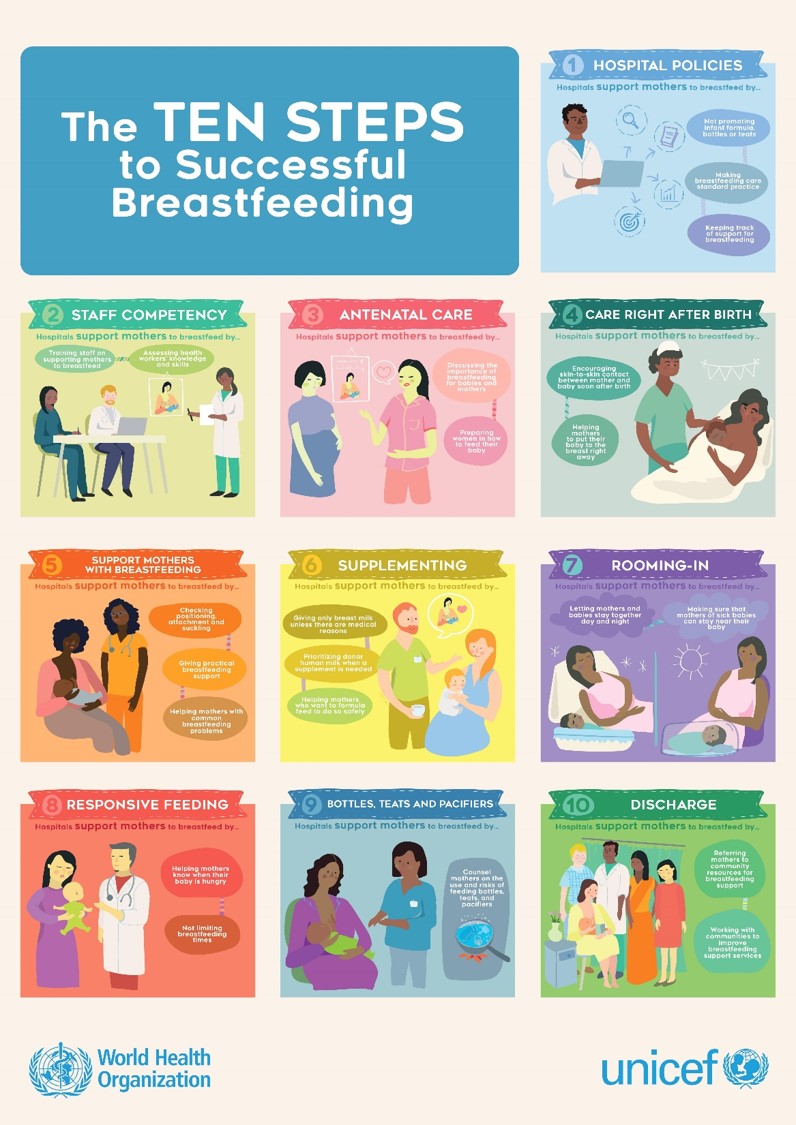
The first few days of a newborn’s life are not only critical for the child, but also an important window for providing mothers with the support they need to breastfeed successfully. UNICEF and WHO launched the Baby-Friendly Hospital Initiative to encourage health facilities worldwide to better support breastfeeding.
The initiative developed the following Ten Steps to Successful Breastfeeding to promote optimal clinical care for new mothers and their infants. There is substantial evidence that implementing the Ten Steps significantly improves breastfeeding rates.
Ten steps to successful breastfeeding
Critical management procedures
1a. Comply fully with the International Code of Marketing of Breast-milk Substitutes and relevant World Health Assembly resolutions.
1b. Have a written infant feeding policy that is routinely communicated to staff and parents.
1c. Establish ongoing monitoring and data-management systems.
2. Ensure that staff have sufficient knowledge, competence and skills to support breastfeeding.
Key clinical practices
3. Discuss the importance and management of breastfeeding with pregnant women and their families.
4. Facilitate immediate and uninterrupted skin-to-skin contact and support mothers to initiate breastfeeding as soon as possible after birth.
5. Support mothers to initiate and maintain breastfeeding and manage common difficulties.
6. Do not provide breastfed newborns any food or fluids other than breast milk, unless medically indicated.
7. Enable mothers and their infants to remain together and to practise rooming-in 24 hours a day.
8. Support mothers to recognize and respond to their infants’ cues for feeding.
9. Counsel mothers on the use and risks of feeding bottles, teats and pacifiers.
10. Coordinate discharge so that parents and their infants have timely access to ongoing support and care.


